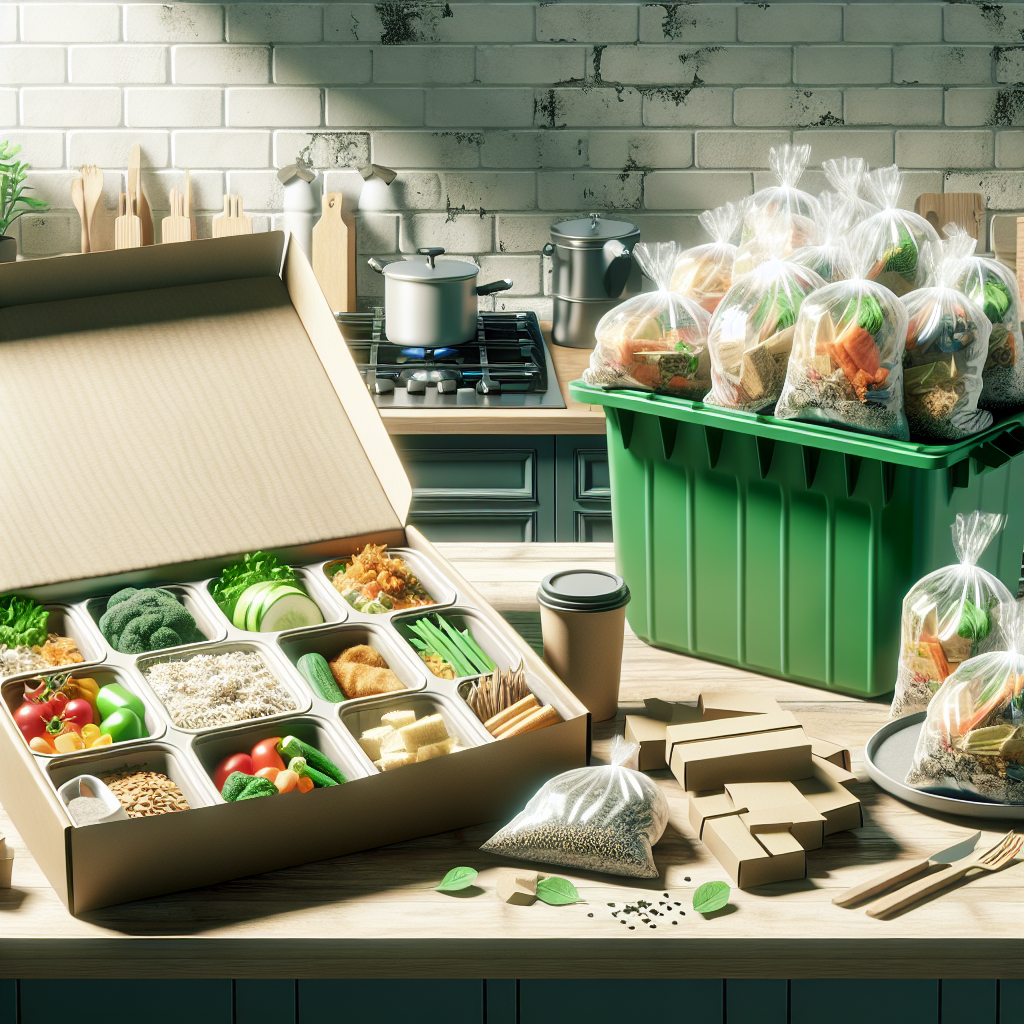The rise of meal kits has revolutionized the way we approach cooking at home. Busy lifestyles and the desire for convenience have led many households to embrace these subscription services. However, as we enjoy the benefits of meal kits—such as time-saving recipes and reduced food preparation waste—it’s worth considering their environmental footprint, particularly regarding packaging materials and the associated food waste. In this article, we will explore meal kit sustainability and offer insights into how packaging materials can impact food waste.
Meal Kits: A Double-Edged Sword
Meal kits offer an enticing solution for busy families, home cooks, and health-conscious individuals. They promise fresh ingredients, gourmet recipes, and minimized shopping trips, leading to a more streamlined cooking experience. However, this convenience often comes at a cost to the environment, primarily through packaging waste and the potential for food spoilage.
The Convenience Factor: Why Meal Kits Are So Popular
The popularity of meal kits can be attributed to several factors:
- Time-Saving: Many individuals and families face time constraints, and meal kits eliminate the need for meal planning and grocery shopping.
- Minimized Food Waste: Well-portioned ingredients aim to reduce food waste at home, especially when compared to traditional grocery shopping.
- Variety and Exploration: Meal kits offer opportunities to explore new cuisines and recipes that individuals might not attempt otherwise.
The Environmental Challenge of Packaging Materials
While meal kits can reduce food waste on a personal level, the environmental impact of their packaging materials is a pressing concern. Most meal kits come in cardboard boxes, including various packaging components, such as:
- Plastic Bags: Individual ingredients often come wrapped in plastic, which can contribute to significant landfill waste.
- Ice Packs: These are commonly used to keep perishable items fresh during shipping but can add to the overall waste burden.
- Styrofoam and Bubble Wrap: Insulation materials used to retain temperature are usually non-biodegradable.
Understanding the Types of Packaging
The materials used in meal kit packaging can greatly influence their sustainability. Common materials include:
- Cardboard: Often recyclable, but when mixed with plastic or other materials, it may not be as easy to process.
- Plastics: While some may be recyclable, many end up in landfills.
- Biodegradable Options: Some companies are starting to use more sustainable packaging alternatives, such as compostable bioplastics.
The Connection Between Packaging and Food Waste
Food waste is a critical issue globally, contributing to greenhouse gas emissions and resource depletion. According to the Food and Agriculture Organization (FAO), roughly one-third of food produced for human consumption is wasted, much of which occurs due to spoilage during transportation and storage.
Meal kit packaging can play a role in either promoting or mitigating this waste. On the one hand, poor packaging may lead to spoilage and product degradation during transit. Conversely, high-quality, sustainable packaging can preserve food freshness and reduce waste.
How Meal Kit Companies Are Adapting
As awareness of environmental issues grows, many meal kit companies are taking proactive measures to adopt more sustainable practices. Here are some ways they’re striving for improvement:
- Sourcing Sustainably: Some meal kit providers are focusing on local ingredients, reducing transportation emissions and packaging waste.
- Enhancing Packaging Options: Companies are increasingly investing in biodegradable and compostable packaging materials to lessen their ecological impact.
- Encouraging Recycling: Many brands include clear instructions on how to recycle the packaging used in their kits. Some even offer return programs for packaging.
Choosing Sustainable Meal Kit Options
As a savvy consumer, you can make informed choices when selecting meal kits with sustainability in mind. Here are some tips:
- Research the Company’s Practices: Look for meal kit companies that prioritize sustainability in their operations.
- Check for Certification: Certifications like USDA Organic or Fair Trade can indicate a commitment to ethical practices, which often extends to packaging and waste management.
- Review Packaging: Consider the packaging materials used and their impact on waste. Opt for companies using recyclable and compostable materials.
The Future of Meal Kits and Environmental Sustainability
As the meal kit industry continues to evolve, the focus on sustainability will likely intensify. Consumer demands for environmentally friendly practices will shape the future of meal kits, driving companies to adapt and innovate in packaging and ingredient sourcing.
Conclusion: The Choice is in Your Hands
By understanding the relationship between meal kit packaging materials and food waste, you can make more informed choices that align with your values. Meal kits can be both convenient and sustainable when you select companies prioritizing environmental impact. Together, we can minimize food waste and the ecological footprint of our meals, ultimately embracing a more sustainable way to enjoy home-cooked dishes without compromising our planet’s health.
In the quest for sustainability, every little action counts—and your choice of meal kit plays an important role in this broader movement towards environmental responsibility.


